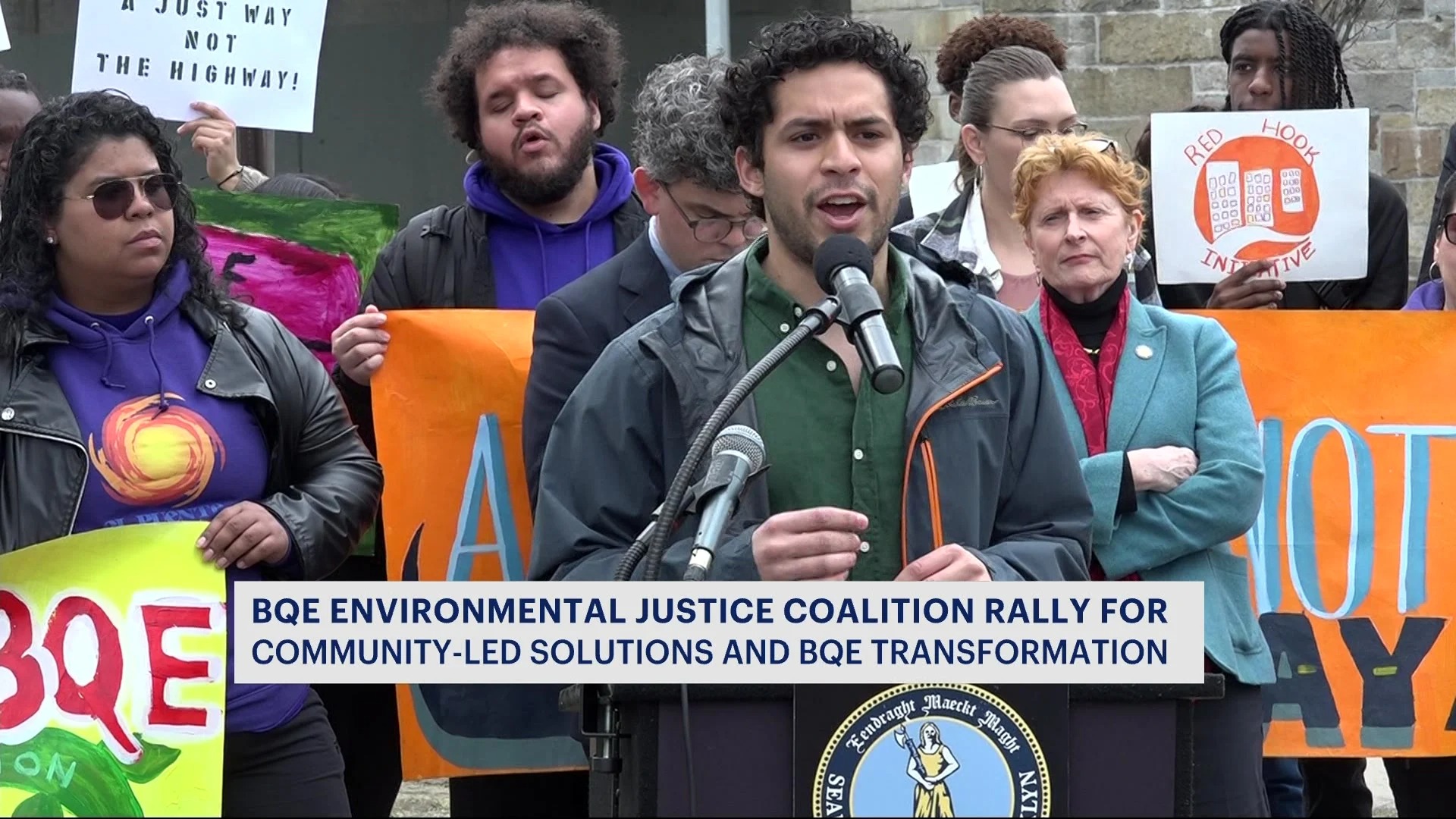Brooklynites gathered in a rally to demand that city and state officials collaborate with the community to transform the aging Brooklyn-Queens Expressway (BQE). The newly-formed Brooklyn-Queens Expressway Environmental Justice Coalition emphasized the need for a community-led approach focused on environmental justice and repairing the communities divided by the expressway.
Sebastian David Baez, an organizer with UPROSE, criticized the current planning process as a “sham,” highlighting the expressway’s negative impact on communities in terms of pollution and division. He called for the government to seize the opportunity to repair the damage, with the community leading the project.
Brooklyn-Queens Expressway Environmental Justice Coalition (Credits: Brooklyn Eagle)
The city plans a $5.5 billion overhaul of the deteriorating triple cantilever section of the BQE in Brooklyn Heights. However, local politicians and the coalition have criticized proposals to add more traffic lanes to the cantilever and have rejected plans for a segmented approach. Instead, they advocate for a comprehensive transformation of the entire BQE corridor.
At the rally, Brooklyn Borough President Antonio Reynoso emphasized the community’s role in decision-making, particularly with federal funding on the horizon. He expressed concerns about outside interests influencing the project and stressed the importance of addressing the expressway’s negative health and environmental impacts.
BQE in Brooklyn Heights (Credits: Streetsblog NYC)
The BQE, a Robert Moses-era highway, has been associated with high rates of asthma and other health issues in affected neighborhoods. Residents, including Quincy Phillips from the Red Hook Initiative and Raísa Lin Garden-Lucerna from Williamsburg, shared personal experiences of living near the expressway and called for community-designed projects to improve conditions and reconnect neighborhoods.
While the city’s Department of Transportation (DOT) supports long-term and short-term fixes for the BQE, including community-driven projects like BQGreen, the state has the ultimate responsibility for implementing changes on BQE North and South.
The DOT is committed to enhancing safety, creating public spaces, and promoting sustainable transportation options throughout the corridor in collaboration with the state DOT.
